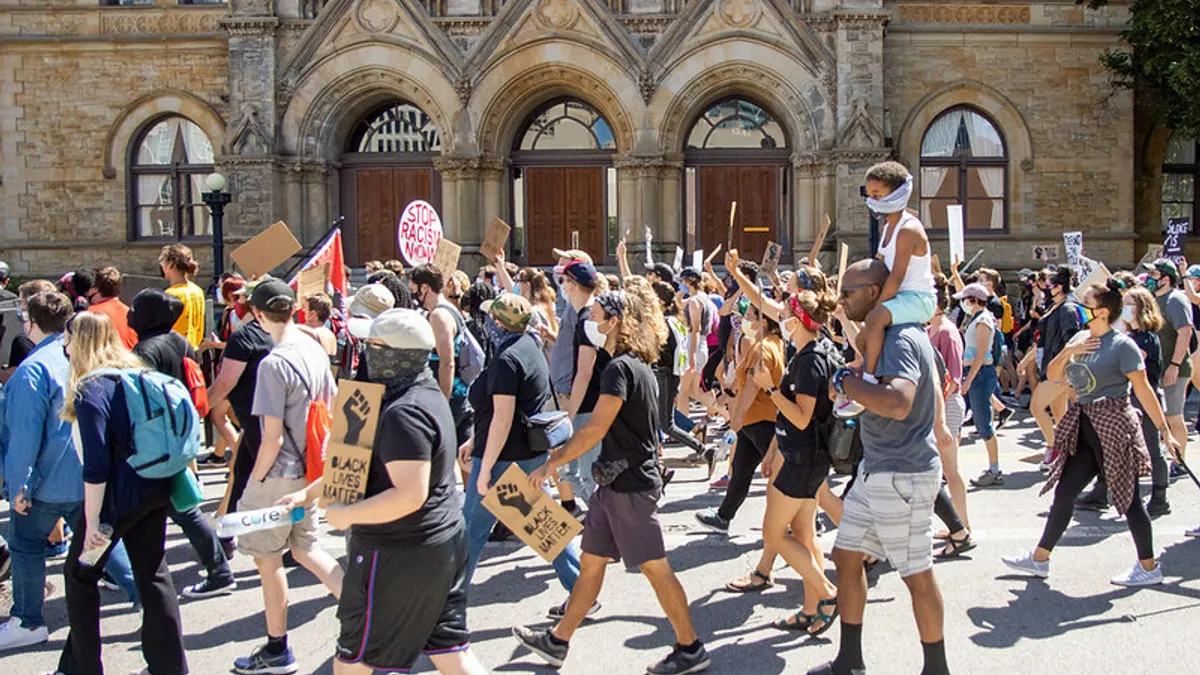Milwaukee County, consistently ranked one of the most segregated metro areas in the United States, turned heads in 2019 when it became the first local government to officially declare racism a public health crisis.
The unprecedented declaration forced the county to look inward at its own leadership practices and understanding of social inequities. It quickly established a program to teach its employees how racism impacts public health and re-examined its budget through a new lens to ensure equitable delivery of services to all residents.
Today, Milwaukee County is far from alone in declaring such a crisis. In the wake of national demonstrations against police violence, coupled with racial disparities in COVID-19 health outcomes, more than 120 cities, counties and states have followed suit in recognizing racism as a public health emergency — with Milwaukee County standing as a leader in this new era of governing social justice.
Normalizing the conversation
The first step in developing any ordinance or resolution around racism is to acknowledge the existence of structural racism, said Bloomberg Associates consultant and public health expert Tamiru Mammo in an email. This was seen in Columbus, OH, for example, when it declared racism a public health crisis following the police killing of George Floyd in May.
"Racism is rooted in the foundation of America," Columbus' resolution reads, noting that inequities in areas such as social capital, education and transportation most often impact minority populations. Columbus City Councilmember Emmanuel V. Remy said this direct resolution helps to support the city's values.
"We felt it was important to publicly state that and resolve that we were committed as a body to address some of those inequities," Remy said.
But once a declaration is made, what's next for the local government? For Milwaukee County, it was getting employees on board with the message.
"We’ve prioritized working internally with county employees to help them really understand what...racism as a public health crisis means," said Jeffery Roman, executive director of Milwaukee County’s Office on African American Affairs.
Roman said the county has implemented a number of tactics to help "level the playing field of knowledge" about how racism affects public health, including more than 11,000 hours of training total across all levels of government. The training provided county employees with the language, capacity and readiness to normalize having conversations about race and equity, Roman said.
The county also offered training for employees looking to volunteer as racial equity ambassadors across different departments. The ambassadors help facilitate ongoing conversations among county employees, and apply a racial equity lens on department services to ensure the delivery of those services are equitable to residents, Roman said.
There are now 55 racial equity ambassadors at the county serving in 17 different departments or elected offices, according to Rae Johnson, an equity analyst with the Office on African American Affairs.
Money talks
In addition to good programming and training, Milwaukee County found it could apply a racial equity lens to its budgeting to tackle root causes of injustice, said Paula Tran Inzeo, director of the Mobilizing Action Toward Community Health (MATCH) program at the University of Wisconsin’s Population Health Institute.
When officials look at how budgets are allocated across jurisdictions, they need to ask themselves about where resources are being spent and if they align with their values, Inzeo said.
To help Milwaukee County departments make such decisions with a racial equity lens, the Office on African American Affairs developed a racial equity budgeting tool for the 2021 budget cycle, allowing the county to become more intentional about the resources at its disposal, according to Roman.
Each department is tasked with using the tool to answer critical questions about how their dollars are spent, Roman said. Questions include: "What are the positive or negative racial equity implications of your proposed budget changes?” And “Have you engaged a diverse group of frontline employees to inform decisions about your proposed budget changes?”
Such a budgeting tool could come in handy for many cities amid increasing pressure to defund or reallocate budgets away from police departments. According to a Smart Cities Dive analysis, 17 of 33 major cities that have adopted their FY21 budgets increased their police budgets for the next fiscal year, yet such decisions must be rooted in more data-driven analysis, said Ryan Clancy, senior adviser with The New Center, in an interview.
Accountability
Once public health declarations are made, there are numerous ways governments can hold themselves accountable in efforts to end racism. Ordinances, for example, are generally much stronger than resolutions, Inzeo said.
"Resolutions at their best, often do have a set of actions [tied to them], but ordinances also have a set of accountability measures that are pretty specific," Inzeo said. "Policies that sustain with operational teeth usually have more rigor."
Cities and counties can also hire specific positions related to health and diversity inclusion to hold these goals to account, but it’s critical to embed that person’s role across the organization to prevent siloing their efforts and to create a shared mission, Inzeo said.
"Policies that sustain with operational teeth usually have more rigor."

Paula Tran Inzeo
MATCH Director, UW Population Health Institute
Chicago recently hired a chief sustainability officer, for example, whose mission is to weave the city’s racial equity goals with its climate goals. The position is intended to create a more inclusive city economy, particularly in light of the pandemic’s disproportionate effect on the city’s Black residents.
And Atlanta Mayor Keisha Lance Bottoms is documenting health and racial disparities with data and including a set of recommended actions, according to Mammo. The city plans to create an advisory council of community stakeholders to consult on proposed solutions; launch campaigns to promote awareness; and see input from the public, he said.
Cautious optimism
As cities move forward with their declarations and resulting anti-racist strategies, Roman said they should continue prioritizing community engagement and input to co-construct, define and create decision-making ownership among marginalized communities.
"We live in a pretty divisive environment...we’ve seen a lot of progress in terms of what the narrative is and what folks are willing to say around racial equity including language like 'pursuing anti-racist strategies,'" Inzeo said. "It's really tricky to translate declarations and statements into operational policy because that does require some looking inward and that does require moving resources around."
Mammo said he’s cautiously optimistic that the recent wave of declarations can help cities move toward a more equitable future.
"Acknowledging racism as a public crisis is an important milestone for each of these state and local governments," Mammo wrote. "It points government staff, elected officials, and community partners in the right direction."
Correction: This story has been updated to reflect that racial equity ambassadors work with county employees.



















